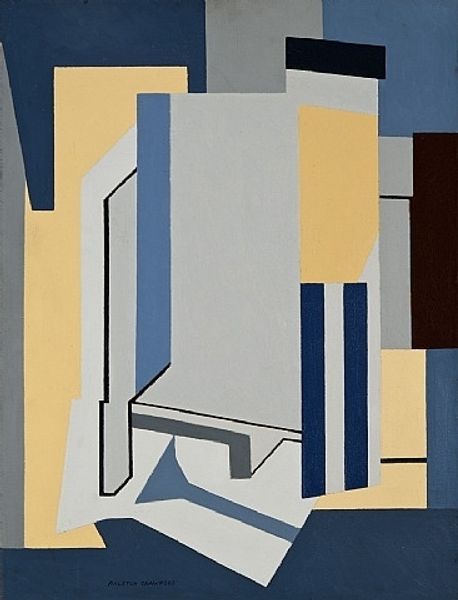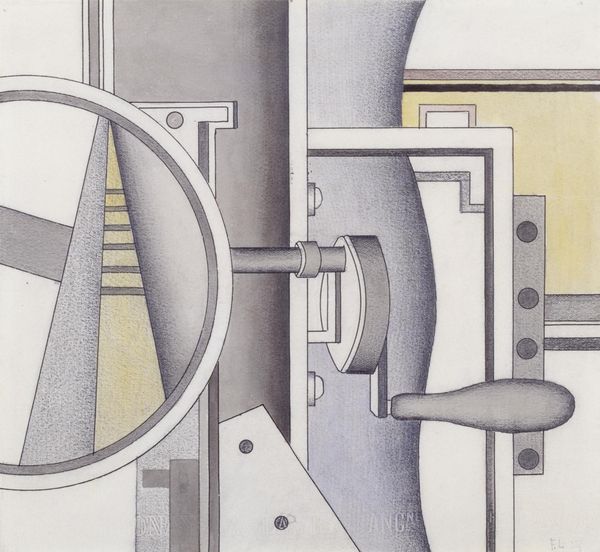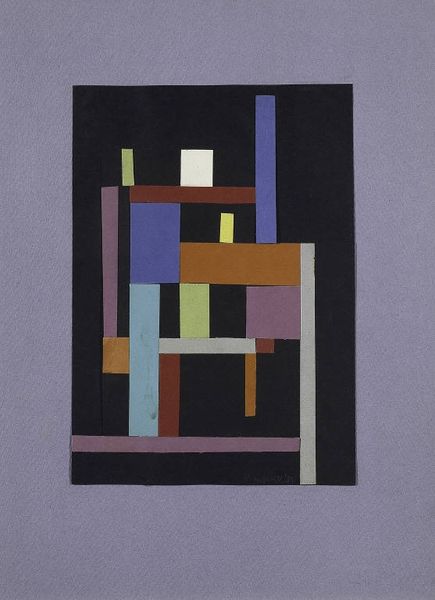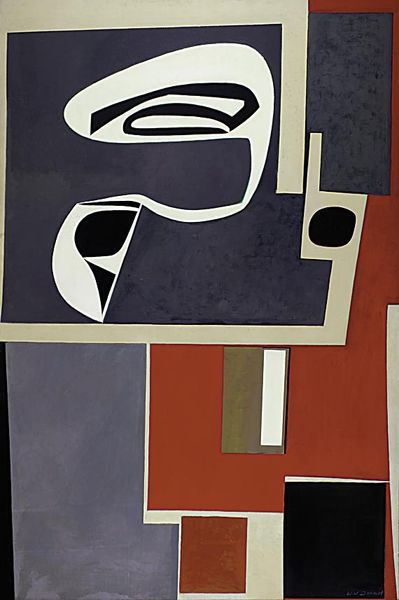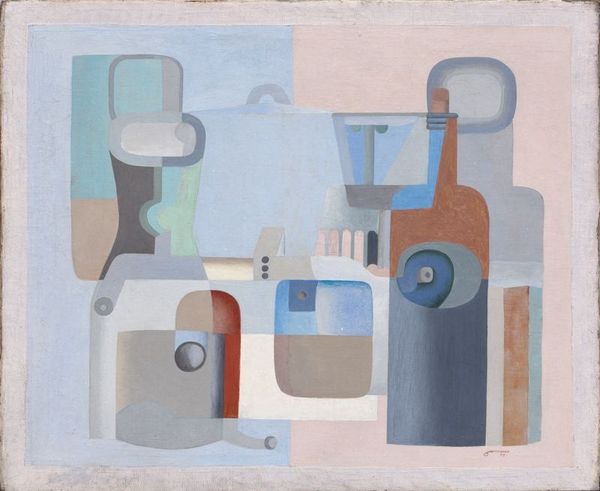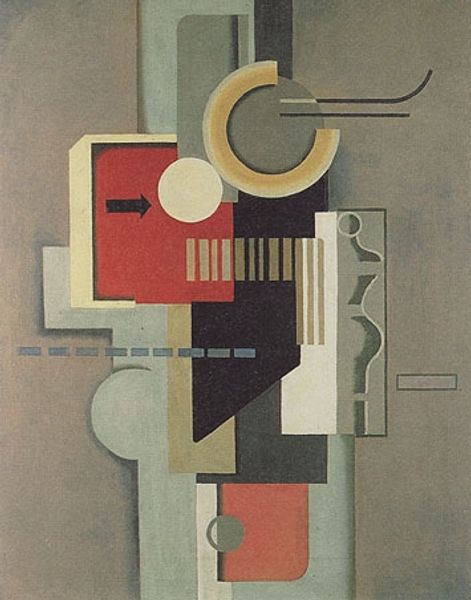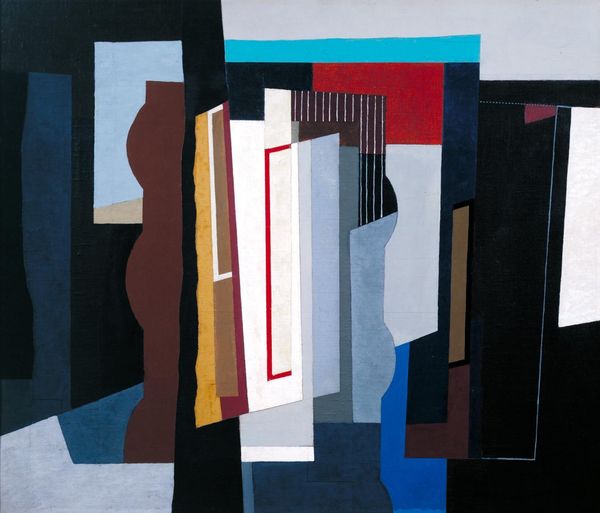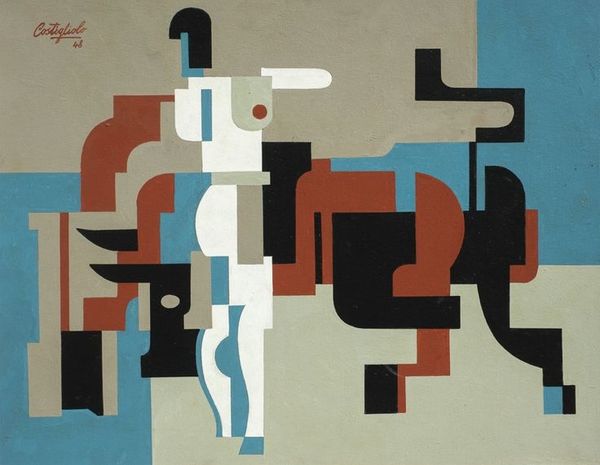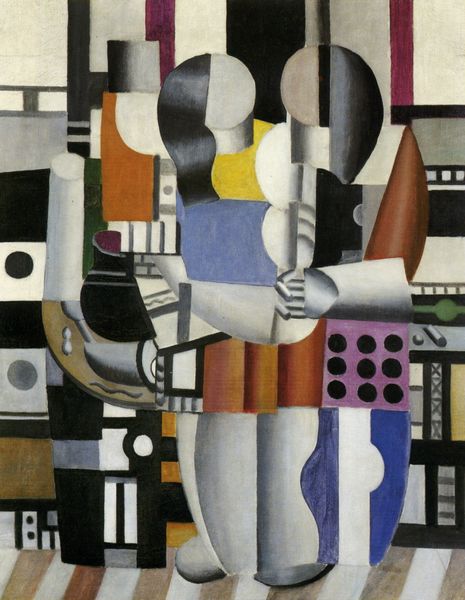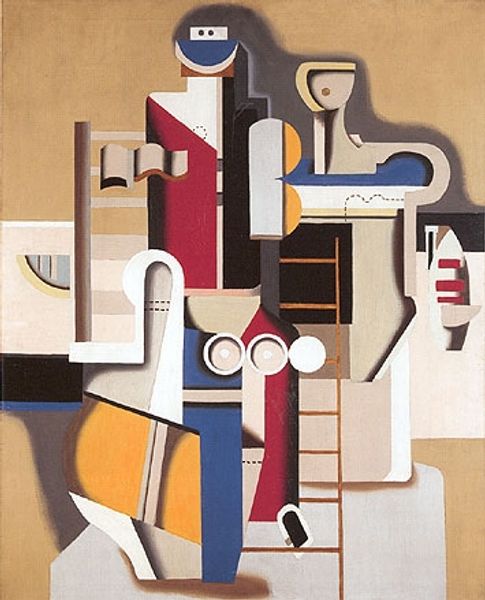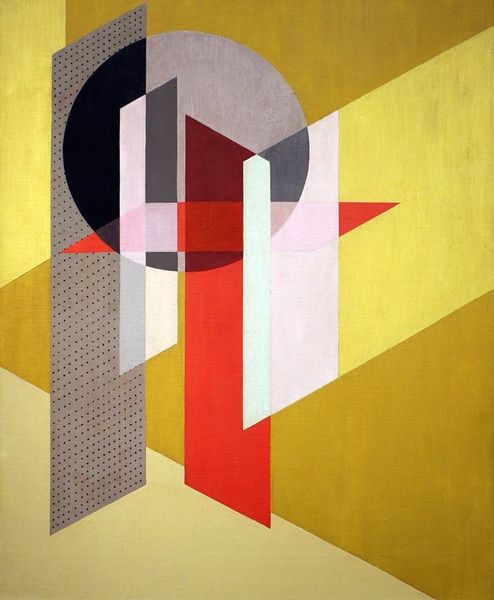
painting, acrylic-paint
#
cubism
#
painting
#
acrylic-paint
#
geometric
#
geometric-abstraction
#
abstraction
Copyright: Public domain
Curator: Let’s take a look at Otto Gustav Carlsund’s "Composition with Red Dots," created in 1927. This striking piece employs acrylic paint and demonstrates Carlsund's exploration of cubism and geometric abstraction. Editor: The geometric shapes layered across a muted background immediately strike me. It feels almost architectural in its design, like the blueprint for some forgotten Bauhaus-era structure, imbued with a solemn industrial aesthetic. Curator: The context here is essential. Carlsund was deeply influenced by Léger, embracing machine aesthetics, and socialist values. He sought to create art that reflected the industrial age, celebrating its forms rather than critiquing them, positioning modern production as part of progressive identity formation. Editor: Those two red dots pull the eye, though. They’re not simply geometric; they seem to function as eyes, anchoring this industrial composition. Circles throughout history are linked to wholeness, the sun, divine protection...are we invited to see the divine or the human within this abstract modernism? Curator: That's an intriguing proposition, and I agree the visual hierarchy the dots create invites multiple readings. Given the social milieu in which Carlsund operated, I read them as representing the working class. The red becomes symbolic of socialism, a collective gaze observing the mechanized landscape. Editor: An interesting tension emerges, though. Cubism itself can be perceived as inherently alienating, fracturing and abstracting the subject. So, does the work unintentionally undermine the values of the system it intends to uphold by depicting it via such disorienting aesthetics? Curator: That is a powerful critique, and indeed, some might argue that abstraction always carries the risk of detaching itself from the very realities it seeks to engage. Carlsund’s project of uniting machine age progress with social concerns certainly exposes that risk. Editor: The layering effect of the forms generates so many compelling angles that symbolize the complexities, positive and negative, of societal progress in any era. Curator: Indeed, engaging with the work requires us to ask ourselves these very complex questions concerning production, representation, and politics. Editor: And those striking dots force us to look...and to think.
Comments
No comments
Be the first to comment and join the conversation on the ultimate creative platform.
